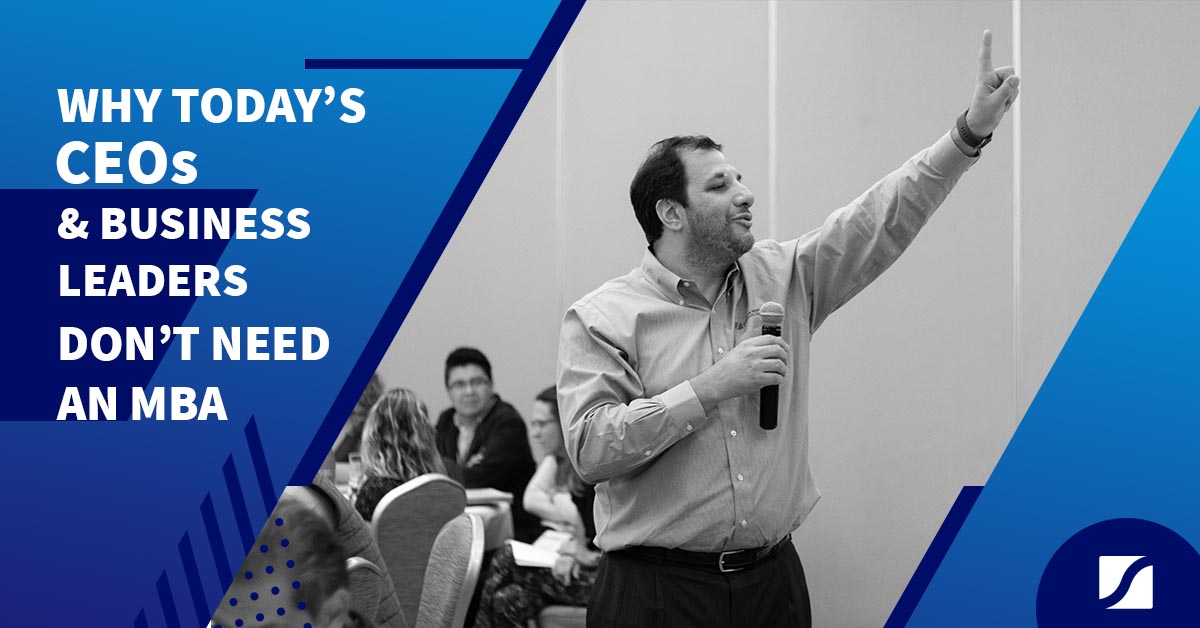CEO SYSTEM: 9 Executable Ideas to Become a Better CEO
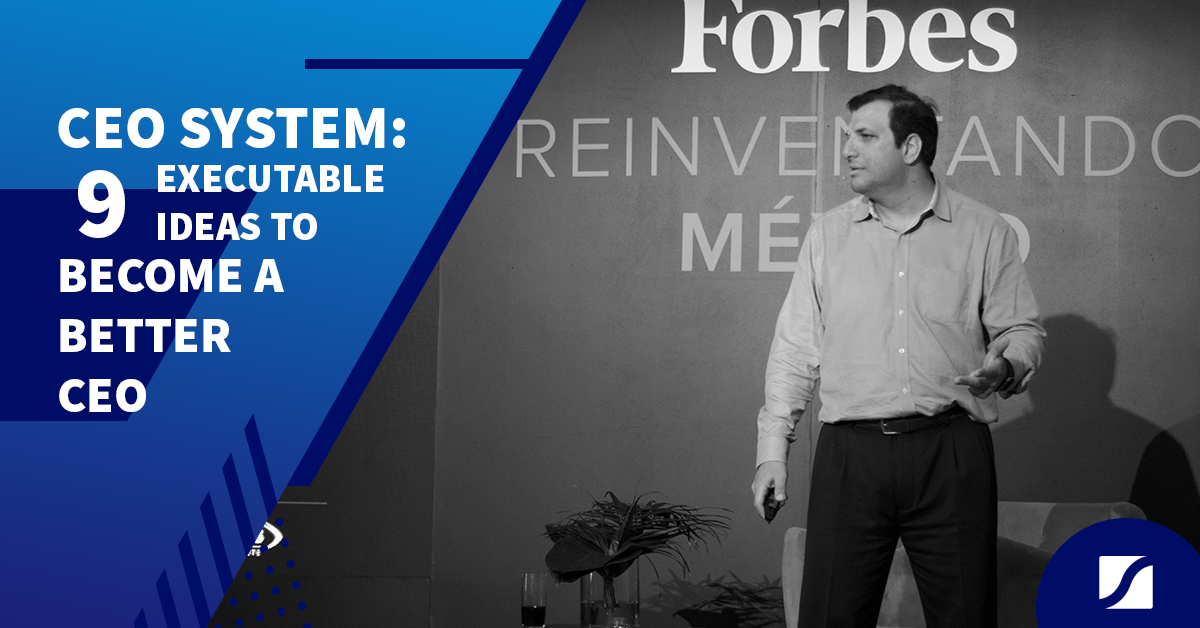
If you want your company to scale, then first you need to thrive as a leader.
I know this first hand. Since 1998, I have started and grown 3 companies across Mexico and the United States.
One of the things that really helped me become a better CEO was learning what other CEOs do to thrive and how they run their company. I have since compiled the best of what I learned into a 3-part system called, “Scale X—CEO system.”
Here's the first step to this system.
The Scale X—CEO System
First, let me give you an overview of the Scale X—CEO system.
Scale X refers to how the world’s top leaders create 10X impact with less drama. The entire system is an implementation blueprint based on the success strategies of the world’s best CEOs.
These strategies break many of the conventional standards of running a business, yet they deliver what many CEOs aspire for: success in business and fulfillment in life.
Scale X—CEO system is comprised of three, overarching steps:
- Focus on You
- Focus on the Team
- Focus on the Company
In this article, I'll focus on the first step. Before we dive in, let me first ask you—which type of CEO are you?
The 2 Types of Leaders
When Satya Nadella was appointed the position of Chief Executive Officer at Microsoft, the company had gone off track. The previous CEO, Steve Ballmer, had missed important trends such as Google, social media communication, and apps. When Satya took over as CEO in 2014, Microsoft was far behind its competitors – valued at only $281 billion.
Today, Microsoft is worth $1.4 trillion.
In six short years, he multiplied the company’s value by a factor of five. Satya simply had an eye for identifying the right trends and then follow through with the right execution.
Satya’s achievement is not a fluke. There is a deliberate system to being a good leader, so it all depends on which type of leader you want to be. Do you want to be a leader like Satya who is ready to do something different? Or do you want to be a leader who just aspires to scale, but at the end of the day shies away from doing the tough work needed to grow?
After 11 years of coaching CEOs, I can confidently say that the first and most important step to scale your business is making the right choice on what type of leader you want to be. Are you going to be the leader who is open to learning new skills, doing things differently, and growing yourself?
If you’ve answered yes, then you’re in the right place. Let’s dive right into the first step of the Scale X—CEO system: focusing on you.
A Personal System to Become a Better CEO
Most acting CEOs were not prepared to be CEOs.
Many of them start out as passionate entrepreneurs with a vision of a product or service they want to sell. Then, when their company has grown, they find themselves being responsible for a payroll of employees and overhead costs of offices.
It’s a big shift when you go from chasing your dream to living the reality of being responsible for the livelihood of your employees. Nobody really trains you for this moment. I’ve spoken to thousands of entrepreneurs who felt overwhelmed by the responsibility and struggles of keeping a company alive, from cash flow issues to office drama.
What can you do to lead your company through the complexities of growth and multiply your impact?
The first step is having a personal system that allows you to thrive. Think of it like putting the oxygen mask on yourself first before helping the ones you’re responsible for. If you are a CEO with drama, then you’re going to put your company in drama. But if you’re thriving as a leader, then so will your company.
That’s why having a personal system is the first step of the Scale X—CEO system. Your personal system will support you across the following three aspects.

Supporting all three aspects will enable you to achieve a balance between expanding your impact and reducing drama. Because at the end of the day, we all want to enjoy the ride as a CEO - and that means living with purpose and making an impact every day.
So let’s focus on you.
I really believe there are three main things that you are personally accountable for as the leader — operate at a higher mindset, build and lead your tribe, and achieve work-life integration.
Here are the nine executable ideas that have helped me achieve all three.
#1 Routine Sets You Free
One of the most important lessons I learned from Verne Harnish is, “Routine sets you free.” For me, my morning routine was a daily habit that was foundational to my success as a business leader and consequently set me free from the chains of struggle, worry, debt, and drama.
As Benjamin Franklin once said, “Early to bed and early to rise, makes a man healthy, wealthy, and wise.”
Robin Sharma is another successful leader who advocates the morning routine through his initiative called,
“The 5 AM Club.”
Here’s a little bit more about my morning routine. I wake up at 5 am and then usually spend 45 minutes to an hour walking briskly or running on a treadmill while simultaneously watching a course. This feeds my mind while working on my fitness. Then, I treat myself to a cup of coffee followed by meditating for 5-10 minutes. I love using the Headspace app to help me meditate. On occasion, if there is something urgent like an email or proposal that a client needs, I’ll make sure to get it done in the morning. That way, I’ve gotten my most important tasks out of the way.
By the time my kid wakes up at 7 am, I’m ready to begin giving energy to the world because I’ve spent two hours fuelling my own energy.
I highly encourage you to wake up two hours before anyone else in your household where you can solely focus on you. Practice a morning routine that allows you to thrive — physically, mentally, emotionally, and spiritually.
#2 The 25-Year Framework
Every scaling methodology I’ve learned and every exponential organization has an MTP — a massive, transformative purpose. Just like a company needs an MTP to align its employees and scale, you too need a long-term vision for yourself to align everything you do and thrive.
When you have a long-term vision that acts as your north star, you’ll quickly be able to bounce back from challenges that come up during the day and quickly refocus.
This framework that really helped me comes from Dan Sullivan’s book, “The 25-Year Framework: Your 21st-century entrepreneurial mindset for continually slowing down time while speeding up your progress over a 25-year period.”
If you have a 25-year framework and you have a hundred quarters, how will you strategically plan your company? How will you run your strategically day-to-day?
When doing this framework, it’s important to remember that human beings overestimate what they can do in the short term and underestimate what they could achieve in the long term. To scale your impact, you really need to focus on the long term. This is one of the key practices to operate with a higher mindset.
#3 Make Personal Breakthroughs
Another way to operate at a higher mindset is by engineering personal breakthroughs. How can you do that? By putting together four specific ingredients: commitment, courage, capacity, and trust.
This is another thing I learned from Dan Sullivan.
When I have set a goal for Growth Institute to scale impact and reduce drama, I ask myself, what’s one thing
I can focus on to help Growth Institute achieve that? Let’s say I decide to focus on training our leaders.
Now, that becomes my commitment.
I am now committed to learning the best solutions to train my leaders. This commitment feeds my courage to seek out the best books, thought leaders, and courses that can teach me. When I learn new skills, it increases my capacity. This, in turn, builds trust in the new systems and skills that I have. When I have trust, I execute.
When you go through this whole process, you’ll create a personal breakthrough that expands your ability to build and lead your team to the next level.
#4 Tools of the CEO Code
Next, I’d like to share with you two tools that have helped me to develop my 25-year framework to scale my mindset and lead my team with clarity.
The first tool is called the “Preparation Tool”.
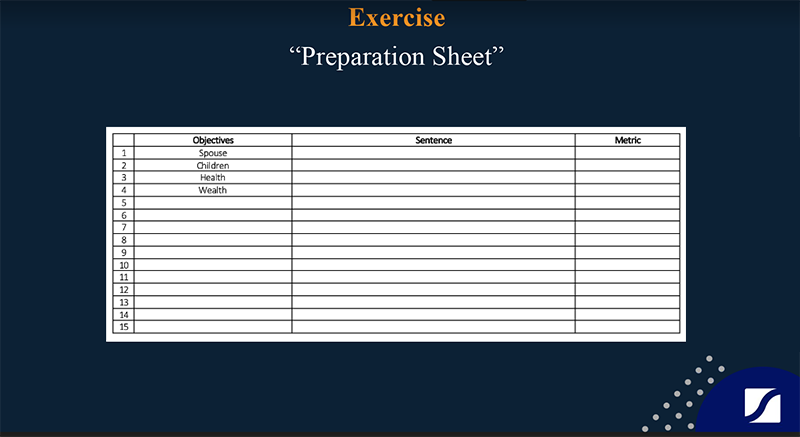
- In the “Objective column”, write a list of the people/things that are important to you in life.
- In the next column, write a positive sentence in the present tense related to each objective.
- Assign a metric to measure success in that aspect.
- Assemble all these sentences into a paragraph and write it down.
- Read this paragraph daily to inspire and realign you every day.
The next tool is called the “Top 5 Tool”.
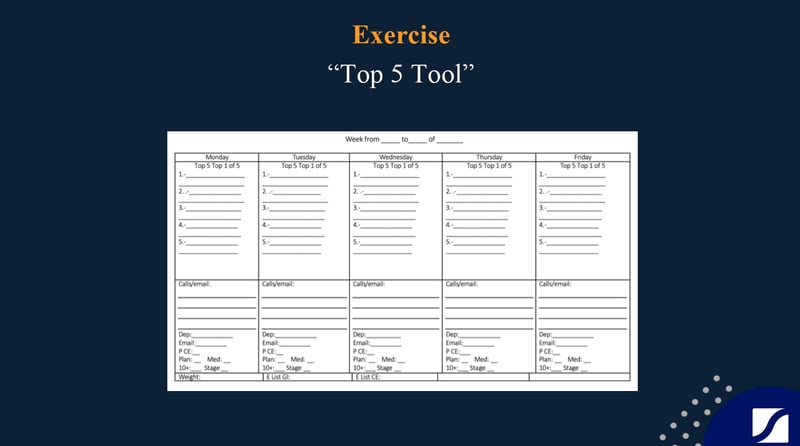
At the beginning of each week, plan out your top five priorities for each day. Always refer to your preparation sheet to realign yourself so you’ll stay on track with your 25-year framework. As a CEO, you are bound to have days or weeks where many people or a crisis need your attention.
This “Top 5 Tool” ensures that you stay on track with your personal vision and achieve a healthy work-life integration. The keyword here is integration because it’s not simply about a work-life balance. You want to integrate both so you can achieve a successful business while enjoying every step.
I’ve been using these tools for at least 15 years, and I strongly recommend them. Yes, there have been weeks, sometimes a month, where I did not use these tools and I was probably half as productive during those moments.
I am confident that using these tools helps me to double my productivity. So start making these tools part of your CEO code and deliberate practice!
#5 Deliberate Practice
This brings me to my next point: deliberate practice.
Let’s imagine two people, Peter and Jane, want to get in better shape and sign up for a marathon. For the sake of an example, let’s assume their current fitness and capacity are exactly the same.
Peter wakes up the next day and goes to the gym. He commits to running every day and eating better. Jane decides to hire a coach who gives her a very specific plan. The coach teaches her what to eat and not eat. The coach also gives her a precise training schedule: run 2 miles tomorrow, then 5 miles on Saturday, then rest on Sunday.
Six months later, Peter and Jane ran the marathon. Who do you think will perform better? If you answered Jane, then you are correct. Jane followed a deliberate practice as advised by someone with more expertise on the subject.
In everything I do in life, I will usually follow someone that is an expert on the subject and teach me how to do it. As a CEO, you can continually expand your impact and become a better CEO by aiming for deliberate practice in whatever goal you want to achieve.
#6 The 3 Time Frames
In his book, “How the Best Get Better,” Dan Sullivan explains a new entrepreneurial time system consisting of three time frames per week: execution days, preparation days, and free days. I highly recommend you read this book.
Personally, I aim for a maximum of three execution days a week. Running this webinar, for example, is on my execution day. I will then allocate two days for preparation. Preparing for this webinar happened on my preparation days. Finally, the remaining days are free days—and for this, I recommend scheduling at least three days out of the office to disconnect and rest.
Following these time frames will make you far more productive and effective as a leader without burning out, so you can expand your impact while enjoying the ride.
#7 Don’t Have an Office in the Office
Did you know that the world’s top CEOs don’t have an office in the office? I know you’re probably asking,
“If I don’t have an office, where will I get my work done?”
The answer is you’ll get your work done wherever you need to be at the office. I don’t have my own personal office space, whether it’s at Growth Instiute’s office in Austin, Texas or my office in Mexico City.
My role in the office is not to execute—that’s my team’s role. As a CEO, my role in the office is to lead and provide strategy. That’s why you don’t have an office in the office, because it will distract you from your true role as a CEO when you’re in the office. Fulfill your execution elsewhere, without distractions, and commit your full focus to leadership and strategy when you’re in the office with your team.
This is one of the best ways to build and lead your team to achieve your organization’s goals.
#8 Play Chess, Not Checkers
To be a better CEO, you need to play chess, not checkers. I don’t mean this literally. What I mean is you need to stop managing your team and start leading them.
When you see your team like a “checkers game”, every piece is a uniform, black and white piece of the same size, color, and capability. You end up simply managing all the pieces and how they each move around.
When you see your team like a “chess game”, you recognize each different piece as having different strengths and weaknesses. The way you strategize shifts dramatically. Now, you need to lead your team in a way that grows their strengths while simultaneously fostering teamwork that offsets one person’s weakness with another person’s strength.
The key lesson here is people do not want to be managed and told what to do by their boss. They want to be recognized for their unique strengths and be led by a leader who knows how to optimize their performance so they can deliver better results with less drama.
#9 Dashboards
The final tool I will share with you today is dashboards. Whatever you do, make sure you have a dashboard displaying the key performance metrics that anyone in the company can access.
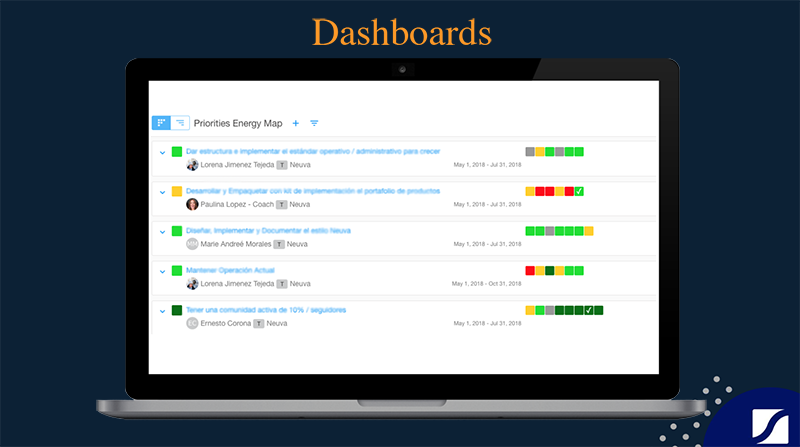
Dashboards allow you to quickly see what’s going well and what needs your attention. Whenever I get to my execution days, the first thing I do is open my dashboard and evaluate, “What is my focus today? Where do I need to spend my time today?”
Using dashboards will really help you prioritize wisely, focus your team, and execute with less drama.
What’s Next?
If you commit to practicing these nine executable ideas, I guarantee you will begin enjoying your role as a CEO much, much more while creating more powerful results. So what’s the next step? Stay tuned for the next part of the series, where I will cover the second step of my Scale X—CEO System: focusing on your team.
If you are committed to accelerating your growth as a CEO, I highly encourage you to join our Master of Business Dynamics program. Check out the details below to learn more. 


